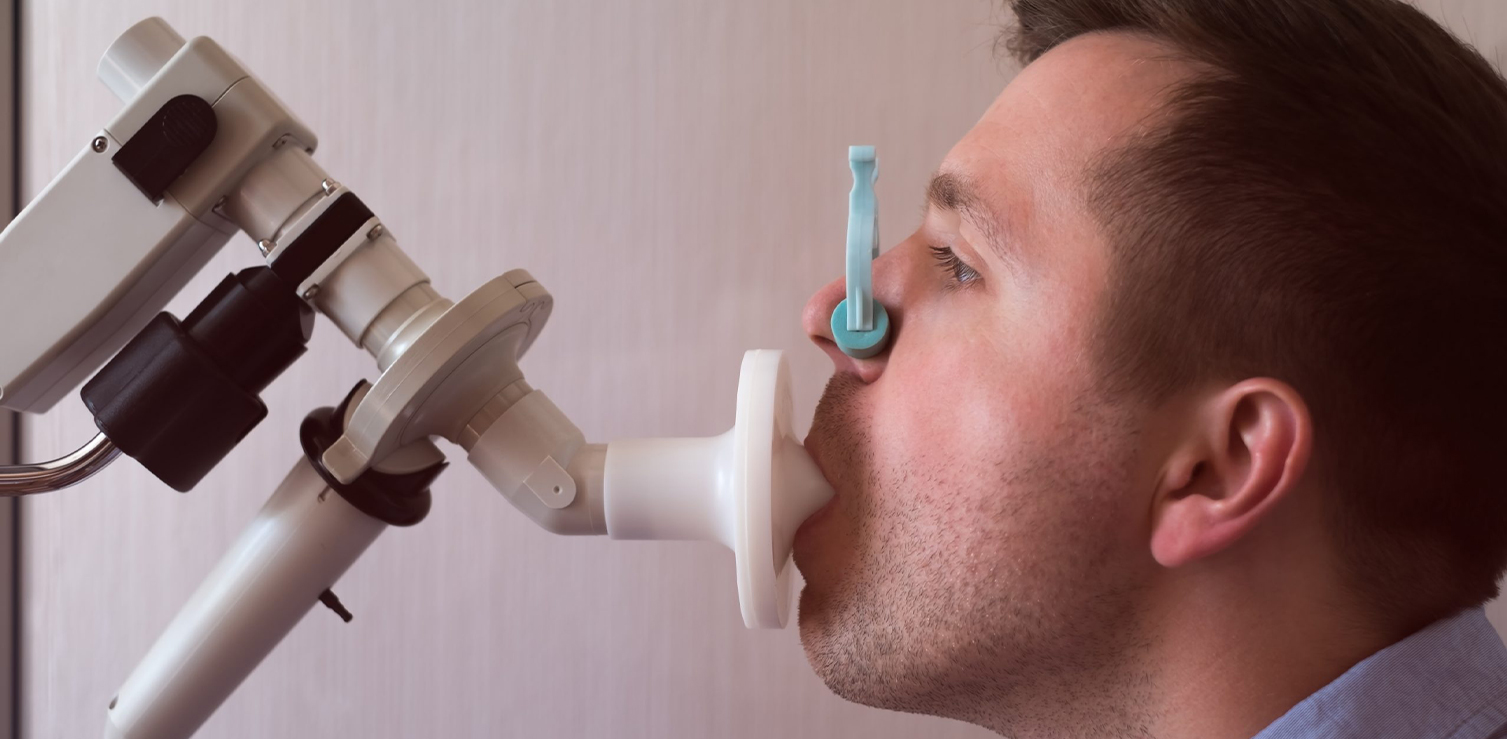
-Spirometry
Spirometry is a common office test that determines how much air you inhale, exhale, and exhale quickly.
Spirometry is used to diagnose asthma, COPD, and other breathing diseases. Spirometry can also be used regularly to check your lung health and establish whether treatment for a chronic lung disease is improving your ability to breathe.
Indication
Your doctor may order a spirometry test if he or she suspects your symptoms are caused by a persistent lung disease such as:
- Asthma
- COPD
- Chronic Bronchitis and Emphysema
- Respiratory fibrosis
If you've already been diagnosed with a chronic lung ailment, spirometry may be used frequently to determine the efficacy of your medications and if your breathing problems are under control. Spirometry may be ordered before a planned surgery to check whether your lung function is acceptable for the procedure's requirements. Spirometry can help diagnose asthma, asthma episodes, and emphysema.
Risks
Spirometry is a relatively safe exam. You may feel short of breath or dizzy after completing the exam.
Because the test requires some physical activity, it is not suggested if you have recently had a heart attack or have another heart condition. Rarely may the test cause severe breathing problems.
Procedure
Follow your doctor's instructions regarding whether to avoid using inhaled breathing treatments or other drugs before the test. Other preparations include the following:
- Wear loose clothing that does not limit your ability to take deep breaths.
- To make breathing easier, avoid eating a large meal before the exam.
A spirometry test requires you to breathe into a tube linked to a spirometer. Before the test, a nurse, technician, or doctor will give you detailed instructions. If something is confusing, listen carefully and ask clarifying questions. To acquire accurate and meaningful results, the test must be performed properly.
To verify that your results are fairly consistent, retake the test at least three times. If the three outcomes are considerably different, the test may have to be repeated. The highest value from three close test results is used to calculate the final result.
The entire process usually takes less than 15 minutes. Following the initial series of testing, your doctor may provide a bronchodilator, which is an inhaled drug that opens your lungs. You will have to wait 15 minutes before taking another set of measurements. Your doctor can then compare the two results to determine whether the bronchodilator improved your airflow.


 0141-3120000
0141-3120000